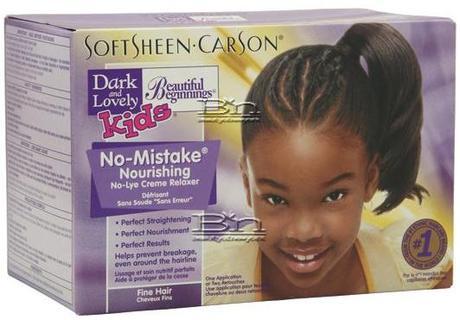
One brand of hair relaxer.
I am a young Senegalese woman with “kinky” hair — specifically, type 4A/4B according to Andre Walker’s hair chart — and I have heard every comment in the book about it. Since preschool I have been told I have “bad hair” by everyone from Dominican hair stylists to my African family members who have constantly begged me to relax it in order to look “proper” and “decent.” No matter the specific critique, my hair has always been deemed wrong by others.
My older, female cousins were the first to influence my hair. I grew up with three older brothers and my mother usually kept my hair braided so neither of us had to think too much about it. At the ripe age of eight, however, my sixteen-year-old cousins told me to start thinking about relaxing my hair. Because I live in America and all of my peers have “good hair,” they reasoned, I should try be more like them.
For most of my life, I conformed to this norm of “good” hair without considering its implications. I believed my hair was not “good hair” and thus needed to try to fix it with all types of harsh chemicals. I was truly excited when my mother began relaxing my hair in the fourth grade — my hair got too long and “unmanageable” by her standards. I loved having my curls tamed to be pin straight.
I didn’t realize at the time that relaxers — or products that straighten and soften hair so that it’s easier to style — contain harsh, extremely damaging chemicals. I also didn’t realize that these products were created to help black women achieve a standard of beauty that aligns with white, hegemonic standards and ideals.
I also didn’t realize that my relaxed hair was different from my white peers’ natural hair until they asked me to braid their hair like mine. I touched their hair and found it was silky, smooth, and completely unlike my chemically changed hair. I wasn’t jealous, though. In fact, I loved that they were jealous of my braids — their jealousy made me feel like I was the one with “good hair.”
When I entered my preteen years, however, I lost this pride in my hair. Relaxers damaged my hair so much that I was force to change the style of my braids, but I didn’t know what to do. I realized the hair industry hardly catered to my “bad” hair. I left my hair in braids for a while, but began to envy girls with silky, long hair — the same ones Seventeen Magazine seemed to cater to.
By my junior year in high school, I decided to buck these standards altogether and go natural: All of the once relaxed and damaged parts of my hair were gone. I made more black friends who guided me to my current natural state and discovered that the natural hair movement is on the rise in the United States. This became evident to me just by walking into the black hair section at Target, which now seems to have a larger stock of natural hair beauty products and fewer relaxers. Actresses like Viola Davis have also played incredible roles in raising awareness about textured hair, helping young women reclaim this standard of beauty by doing so.
The standard of “good” hair — and the corresponding idea that black hair is “wrong” or “flawed” — is problematic because it sets yet another standard to which black people are expected to conform in order to look “acceptable” by normative (racist) standards and directly plays into power dynamics and oppression. In order to change this standard, we need raise awareness about it as well as encourage self-acceptance. No matter how we choose to transform our hair — whether by relaxing it, opting for twists or braids, or going natural — we must reclaim our hair for ourselves. Bucking the standards of the dominant group in power is critical not only for self-acceptance, but also for transforming the skewed perceptions — and the subsequent inequality those perceptions create.

